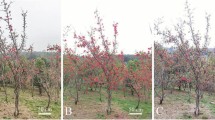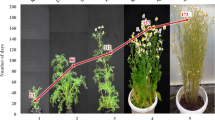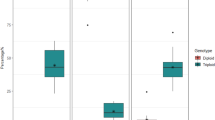Abstract
HOP breeding is complicated by the fact that the flowers of male plants are useless for breeding, so that their genotype in this respect cannot be indicated pheriotypically. Hence male parents for breeding work have hitherto had to be selected by progeny testing. Brewing quality of hop cones (the female inflorescences) depends mainly on the amounts of soft resins present (the α-acid fraction being the most important) and the composition of the essential oil. The resins produce the bitter character of beer, while the oils contribute the characteristic flavour.
This is a preview of subscription content, access via your institution
Access options
Subscribe to this journal
Receive 51 print issues and online access
$199.00 per year
only $3.90 per issue
Buy this article
- Purchase on Springer Link
- Instant access to full article PDF
Prices may be subject to local taxes which are calculated during checkout
Similar content being viewed by others
References
Brooks, S. N., and Likens, S. T., Crop Sci., 2, 189 (1962).
Roberts, J. B., Ph.D. thesis (Univ. London), 1963.
Neve, R. A., J. Inst. Brew., 69, 129 (1963).
Institute of Brewing: Hops Analysis Sub-Committee, J. Inst. Brew., 70, 156 (1964).
Author information
Authors and Affiliations
Additional information
A corrigendum to this article is available online at https://doi.org/10.1038/2081264e0.
Rights and permissions
About this article
Cite this article
HARTLEY, R., NEVE, R. Relationships between Constituents of Cones and Male Flowers of the Hop (Humulus lupulus, L.). Nature 208, 804–805 (1965). https://doi.org/10.1038/208804a0
Issue Date:
DOI: https://doi.org/10.1038/208804a0
Comments
By submitting a comment you agree to abide by our Terms and Community Guidelines. If you find something abusive or that does not comply with our terms or guidelines please flag it as inappropriate.



